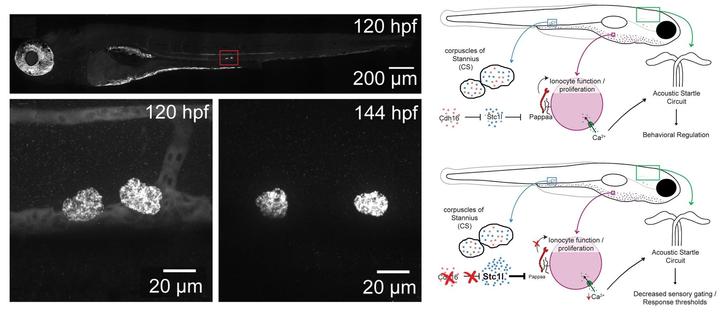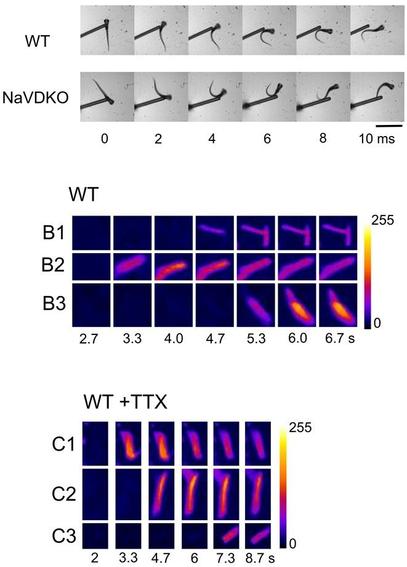
Topographically organized dorsal raphe activity modulates forebrain sensory-motor computations and adaptive behaviors - preLights
A topographic code for behavioral flexibility? Mapping dorsal raphe dynamics to sensory-motor decisions in zebrafish.
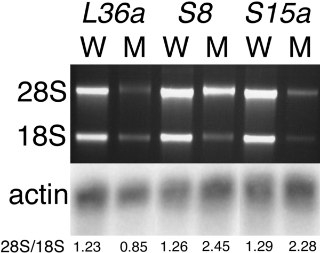
Many Ribosomal Protein Genes Are Cancer Genes in Zebrafish
A screen for tumour suppressor genes in zebrafish has identified several genes encoding ribosomal proteins, indicating that these genes might be an unappreciated class of cancer genes.
#spotLights hits episode 10! 🙌
Jonathan Townson talks to Helena Crellin (#BuckleyLab) about her #preprint introducing an optogenetic approach to study "how forces are propagated through complex tissues during development" in #zebrafish 🧠🐟
Listen below! 🎧
🎙️ https://youtu.be/6uce4whDt2M
#biologists100 #optogenetics #OpenScience #podcast

spotLights Ep 10: preLights in conversation with Helena Crellin
#SensoryGating helps animals to distinguish threatening & non-threatening stimuli. This study reveals a mechanism whereby
#cadherin 16 (cdh16)-dependent changes in the corpuscle of Stannius regulate whole-body
#calcium homeostasis & sensory gating in
#zebrafish @PLOSBiology https://plos.io/4m8XZA2 
Cadherin-16 regulates acoustic sensory gating in zebrafish through endocrine signaling
Sensory gating is a neuronal process that enables animals to distinguish between threatening and non-threatening stimuli. This study reveals a brain non-autonomous mechanism whereby cadherin-16-dependent changes in the endocrine organ corpuscle of Stannius regulate whole-body Ca2+ homeostasis and sensory gating in zebrafish.
Environmentally induced variation in sperm sRNAs is linked to gene expression and transposable elements in zebrafish offspring.
#Transposons #sRNAs #miRNAs #piRNAs #Sperm #Competition #Zebrafish
https://www.nature.com/articles/s41437-025-00752-2
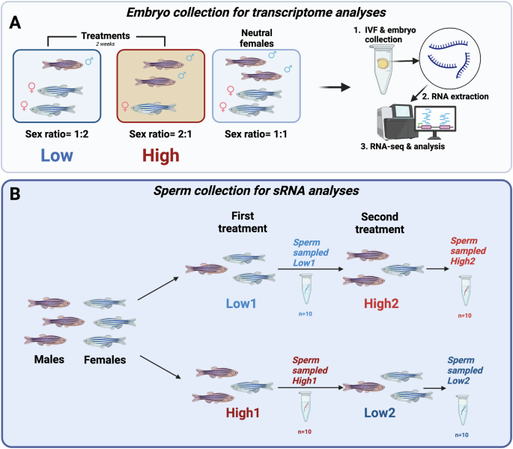
Environmentally induced variation in sperm sRNAs is linked to gene expression and transposable elements in zebrafish offspring - Heredity
Environmental factors affect not only paternal condition but may translate into the following generations where sperm-mediated small RNAs (sRNAs) can contribute to the transmission of paternal effects. sRNAs play a key role in the male germ line in genome maintenance and repair, and particularly in response to environmental stress and the resulting increase in transposable element (TE) activity. Here, we investigated how the social environment (high competition, low competition) of male zebrafish Danio rerio affects sRNAs in sperm and how these are linked to gene expression and TE activity in their offspring. In a first experiment, we collected sperm samples after exposing males to each social environment for 2 weeks to test for differentially expressed sperm micro- (miRNA) and piwi-interacting RNAs (piRNA). In a separate experiment, we performed in vitro fertilisations after one 2-week period using a split-clutch design to control for maternal effects and collected embryos at 24 h to test for differentially expressed genes and TEs. We developed new computational prediction tools to link sperm sRNAs with differentially expressed TEs and genes in the embryos. Our results support the idea that the molecular stress response in the male germ line has significant down-stream effects on the molecular pathways, and we provide a direct link between sRNAs, TEs and gene expression.
Are action potentials in vertebrate muscle essential for contraction? This study of
#zebrafish lacking
#SodiumChannel NaV1.4 reveals that NaVs are dispensable for
#muscle contraction, so the need for muscle
#ActionPotentials can vary between vertebrates
@PLOSBiology https://plos.io/42EXQwx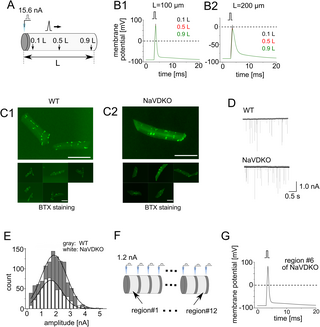
Normal locomotion in zebrafish lacking the sodium channel NaV1.4 suggests that the need for muscle action potentials is not universal
It is widely accepted that action potentials in vertebrate muscle are indispensable for contraction. This study of zebrafish lacking the sodium channel NaV1.4 reveals that NaVs are not essential for muscle contraction, and that the physiological requirement for action potentials in muscle can vary between vertebrates.
#FightForSight Funded #PhD project to work on #zebrafish model of infantile nystagmus! at
@NeurogeneticsLeicester
https://www.findaphd.com/phds/project/exploring-therapeutic-interventions-for-infantile-nystagmus/?p184343
please boost and spread the words! and contact Dr Mervyn Thomas mt350@le.ac.uk directly for this exciting opportunity!
#neuroscience
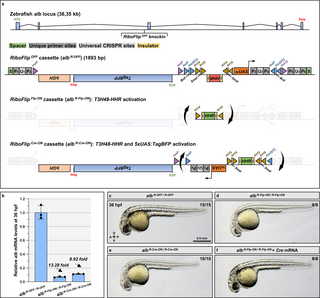
A recombinase-activated ribozyme to knock down endogenous gene expression in zebrafish
Author summary Understanding mRNA and protein function requires tools to module gene expression. Current tools in vertebrates include site-directed recombinases and endonucleases, which display variable efficiency depending on the genomic context. Here, we introduce a complementary tool to knock down gene expression in zebrafish, one based on the T3H48 self-cleaving ribozyme. We first show that the T3H48 ribozyme can reduce the expression of a reporter transgene, as well as that of an endogenous gene. Using a base-editing strategy to inactivate the ribozyme, we show that this knock down is specific and reversible. We then created a Flippase- and Cre-activatable T3H48 ribozyme called RiboFlip. We find that the induction of RiboFlip recapitulates the mutant phenotype when inserted in the albino gene. Moreover, we show that a Cre- and Dre-controllable Gal4/UAS reporter in the RiboFlip cassette can label knocked-down cells independently of the expression of the target gene. Altogether, these data show that the RiboFlip can serve as a flexible knockdown tool, thereby complementing existing strategies to control gene expression.
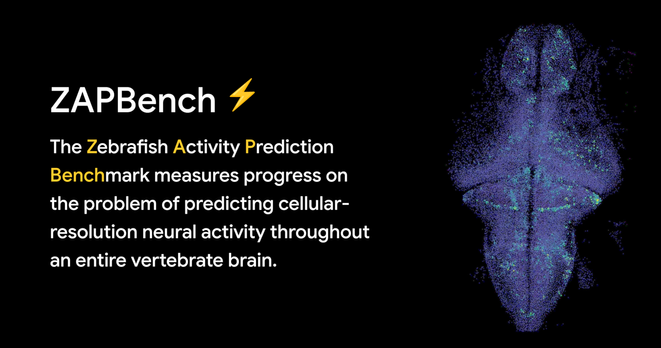
ZAPBench
ZAPBench evaluates how well different models can predict the activity of over 70,000 neurons in a novel larval zebrafish dataset.
"Forecasting Whole-Brain Neuronal Activity from Volumetric Video", Immer et al. 2025 (with Florian Engert, Jeff Lichtman, Misha Ahrens, Viren Jain and Michal Januszewski)
https://www.arxiv.org/abs/2503.00073
"ZAPBench: a benchmark for whole-brain activity prediction in zebrafish", Lueckmann et al. 2025
https://openreview.net/pdf?id=oCHsDpyawq
#ZAPBench #neuroscience #zebrafish #CalciumImaging #CompNeurosci

Forecasting Whole-Brain Neuronal Activity from Volumetric Video
Large-scale neuronal activity recordings with fluorescent calcium indicators are increasingly common, yielding high-resolution 2D or 3D videos. Traditional analysis pipelines reduce this data to 1D traces by segmenting regions of interest, leading to inevitable information loss. Inspired by the success of deep learning on minimally processed data in other domains, we investigate the potential of forecasting neuronal activity directly from volumetric videos. To capture long-range dependencies in high-resolution volumetric whole-brain recordings, we design a model with large receptive fields, which allow it to integrate information from distant regions within the brain. We explore the effects of pre-training and perform extensive model selection, analyzing spatio-temporal trade-offs for generating accurate forecasts. Our model outperforms trace-based forecasting approaches on ZAPBench, a recently proposed benchmark on whole-brain activity prediction in zebrafish, demonstrating the advantages of preserving the spatial structure of neuronal activity.



